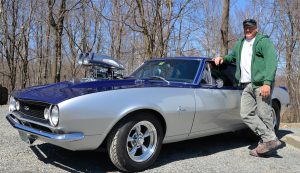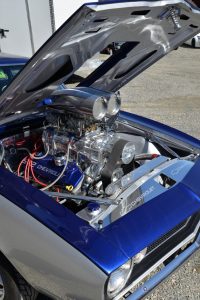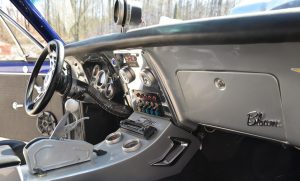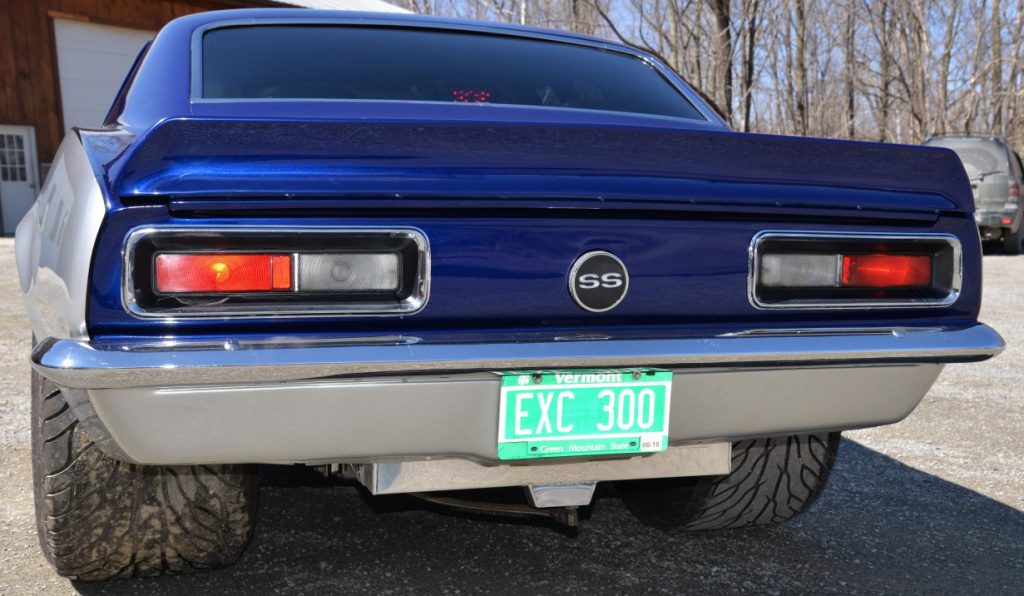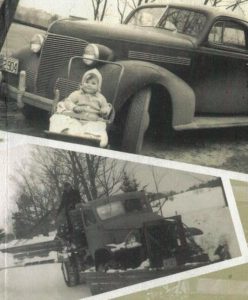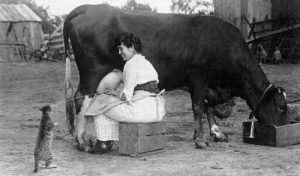From the Editor….
Dave, would you please keep this oil discussion going?
Questions….. Should we use synthetic in our old cars? What about the question of single-weight oil vs multi-weight oils in our old cars, which is best and why? You have mentioned the moisture collecting in our car’s oil pans, especially during winter storage, should oil types come into the conversation here? What about this whole question of 600 weight in our old differentials? What should we use and is 600 weight really 600 weight? Thanks Dave.
Gary, good questions.
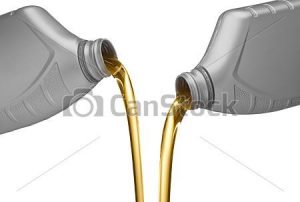 The question of synthetic oil in our old cars is a good one. Like any selection of engine oil, it comes down to the application.
The question of synthetic oil in our old cars is a good one. Like any selection of engine oil, it comes down to the application.
The quality of engine oils has improved dramatically since our antique cars were manufac-tured. The multi-viscosity high detergent oils available today are vastly superior to the oils availa-ble when these cars were new. Not that many years ago, engines were full of sludge and varnish from engine oil deposits. Cars needed to have the engines flushed with flushing oil during an oil change.
The additives and detergents in engine oils still break down, requiring oil changes. This happens more quickly under “severe” driving conditions. Older, carbureted vehicles with open crank case ventilation require more frequent oil changes. The fuel mixture of carbureted engines is not as well controlled as the fuel mixture of modern computerized fuel injected en-gines. Unburned fuel in carbureted engines and early fuel injected engines will dissolve in to the engine oil. Modern engines have sealed crankcases. Older cars have open crankcase ventilation, leaving an opportunity for dust and dirt to migrate in to the engine oil. Because of these reasons, oil needs to be changed more frequently in these older engines than it does in modern engines.
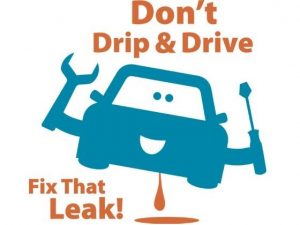 I have had a number of people tell me they will not use synthetic oil, because they think it will leak out. If your engine already leaks oil, this is true. Synthetic oil will not cause new leaks in an engine. If the engine has sound seals and gaskets, synthetic will not leak any more than conventional oil.
I have had a number of people tell me they will not use synthetic oil, because they think it will leak out. If your engine already leaks oil, this is true. Synthetic oil will not cause new leaks in an engine. If the engine has sound seals and gaskets, synthetic will not leak any more than conventional oil.
Synthetic oil is superior to conventional oil for lubricating and cooling the moving parts of the engine.
If the vehicle has a fairly new engine I would be more inclined to use synthetic oil. The parts and machining cost to rebuild an engine can quick-ly pass $5,000. Synthetic oil is a relatively inexpensive way to protect this investment.
Some vehicles, like air cooled Volkswagens, were designed to use straight weight oil. I have been told multi viscosity oils can foam up in these en-gines, and only straight weight oils should be used. I use straight 30 weight synthetic engine oil in my John Deere Tractor.
Moisture will condense in the crank case as a byproduct of combus-tion. This moisture will remain there until it evaporates away due to engine heat. The engine needs to be run for a while fully warmed up for this to hap-pen. If the car is not driven much, it makes sense to change the oil before putting the car away for winter storage.
There are many factors to consider when choosing an engine oil. The type of driving, number of miles driven in a driving season, the condition of the engine, oil consumption of the engine and cost of the engine oil should all be considered.
Ultimately, it is up to you to decide if the extra protection of synthetic engine oil is worth the extra cost.
Next month I will talk about gear oils.
Editor’s notes….. Watch the monthly VAE auction, you will find some great oil deals. Much of the time the price is half or less what you would pay at the store and the items are high quality, new products.










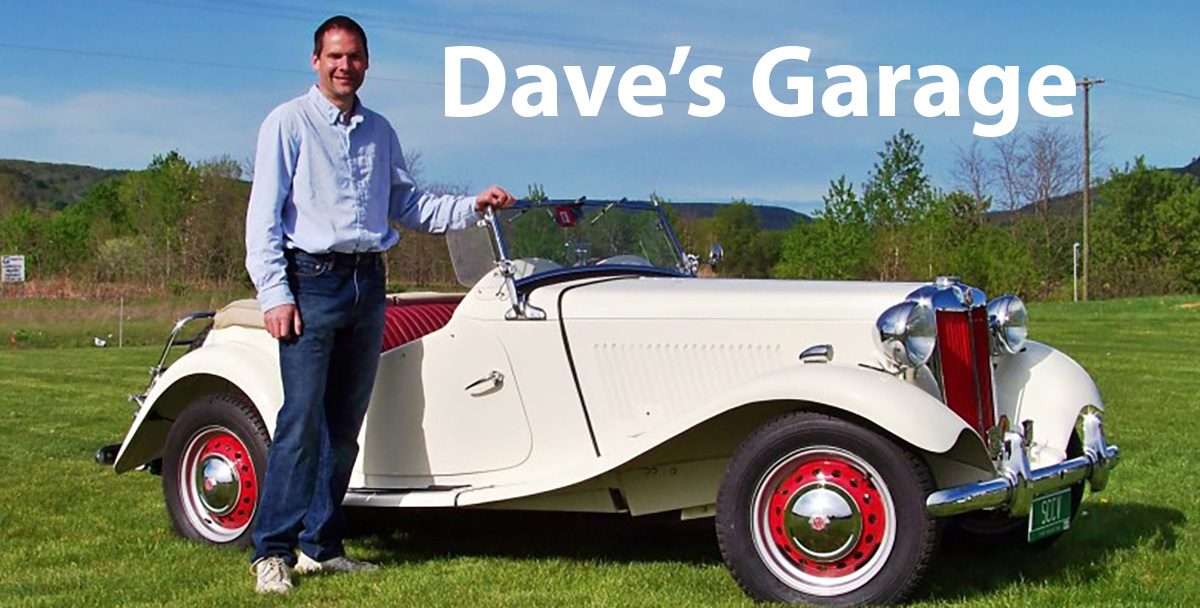
 If you are reading this and are not a “cat person” do not bother to continue. But, if you tolerate them and even love them, read on.
If you are reading this and are not a “cat person” do not bother to continue. But, if you tolerate them and even love them, read on. In the middle of May we went to Colorado for our grandson`s high school graduation and then for a visit to the Grand Canyon with our daughter. When we returned home, we discovered that the female cat had delivered five kittens, all of whom were living in our wood shed in and among the stacked furnace wood. Of course they were all cute – three calico, one gray, and one black. Who was the Dad??? No idea at all. In the last week of June, our daughter, grandson and his girlfriend came for their annual visit, to be in the Milton July fourth parade and to ride in a classic car. Meanwhile, it was becoming ap-parent that we could not keep all of these kittens and Mommy Cat. How do you get five kittens that you can’t even catch, into adoptive homes? Our daughter-in-law demonstrated the wonders of social media to us by putting their pictures on Face Book. The word was out to the world that we had these amazing possible pets to give away. About this time, our grandson and his friend had to return to Colorado, then our daughter’s significant other arrived with his two children and we all tried to catch the kittens as we now had people clamoring for them. We managed to catch three with only a little patience, deception and speed, and handed them over to some very happy people. One lady even decided she wanted two. Next we needed to catch the last two and Mommy cat. Finally after much effort, we caught the last two kittens. Who would have thought that a cute little kitten could be so vicious? Wendell’s hand is healing and nobody has shown symptoms of cat scratch fever yet. A lady wanted the little terror so badly, she drove three hours from New Hampshire to get it.
In the middle of May we went to Colorado for our grandson`s high school graduation and then for a visit to the Grand Canyon with our daughter. When we returned home, we discovered that the female cat had delivered five kittens, all of whom were living in our wood shed in and among the stacked furnace wood. Of course they were all cute – three calico, one gray, and one black. Who was the Dad??? No idea at all. In the last week of June, our daughter, grandson and his girlfriend came for their annual visit, to be in the Milton July fourth parade and to ride in a classic car. Meanwhile, it was becoming ap-parent that we could not keep all of these kittens and Mommy Cat. How do you get five kittens that you can’t even catch, into adoptive homes? Our daughter-in-law demonstrated the wonders of social media to us by putting their pictures on Face Book. The word was out to the world that we had these amazing possible pets to give away. About this time, our grandson and his friend had to return to Colorado, then our daughter’s significant other arrived with his two children and we all tried to catch the kittens as we now had people clamoring for them. We managed to catch three with only a little patience, deception and speed, and handed them over to some very happy people. One lady even decided she wanted two. Next we needed to catch the last two and Mommy cat. Finally after much effort, we caught the last two kittens. Who would have thought that a cute little kitten could be so vicious? Wendell’s hand is healing and nobody has shown symptoms of cat scratch fever yet. A lady wanted the little terror so badly, she drove three hours from New Hampshire to get it. Now we “just” had to catch the mother, so we put out a Have-a-Heart trap, put food in it and hoped for the best. The first night we caught a raccoon which our daughter insisted we release. The second night we caught the same raccoon again. Wendell says it died of cardiac arrest, all very sudden and unexpected. The third night we caught a very large Tom cat that we have never seen before. He was the wildest thing I have ever seen, bounced off the garage walls and made a break for it. That might solve the mystery of who the father is. At one point, I thought I had trapped the mother in our garage, but she managed to slide under the garage door and get away again. We are still trying. So, our saga is not over – we still need to catch Mommy cat and take her to the Humane Society – may have her spayed first, but it may be too late. Ah, CATS!!!!! I’ve gotta lov’em!!
Now we “just” had to catch the mother, so we put out a Have-a-Heart trap, put food in it and hoped for the best. The first night we caught a raccoon which our daughter insisted we release. The second night we caught the same raccoon again. Wendell says it died of cardiac arrest, all very sudden and unexpected. The third night we caught a very large Tom cat that we have never seen before. He was the wildest thing I have ever seen, bounced off the garage walls and made a break for it. That might solve the mystery of who the father is. At one point, I thought I had trapped the mother in our garage, but she managed to slide under the garage door and get away again. We are still trying. So, our saga is not over – we still need to catch Mommy cat and take her to the Humane Society – may have her spayed first, but it may be too late. Ah, CATS!!!!! I’ve gotta lov’em!! 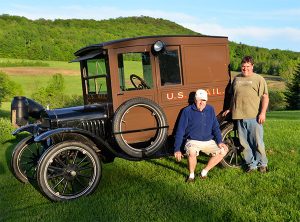 Dan Noyes and his dad, Bob, with their 1923 Model T Mail Truck that has been in the family for five generations.
Dan Noyes and his dad, Bob, with their 1923 Model T Mail Truck that has been in the family for five generations.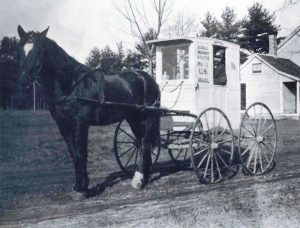 In 1923 the route was 28.6 miles, Wheel Tracks was unable to find if Ned and Fred had that distance on Rural Route #1 to deliver mail. Using information from Vermont area routes, during that time the 28.6 miles was somewhat normal when horses were used. In the winter time the postman would stay over night along the route somewhere …mostly wherever the best meals were served.
In 1923 the route was 28.6 miles, Wheel Tracks was unable to find if Ned and Fred had that distance on Rural Route #1 to deliver mail. Using information from Vermont area routes, during that time the 28.6 miles was somewhat normal when horses were used. In the winter time the postman would stay over night along the route somewhere …mostly wherever the best meals were served.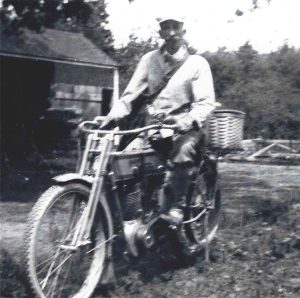 In 1912 Fred traded Ned (the horse) for a 1912 Harley motorcycle (vin #2139B).
In 1912 Fred traded Ned (the horse) for a 1912 Harley motorcycle (vin #2139B). 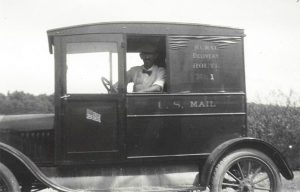 Then… in 1923, Fred Noyes started using his 1923 Ford Model T mail truck. It is believed Fred bought only the Model T chassis because in May of 1922, he purchased a “Light Runner Rural Mail Wag-on” body from Harrington manu-facturing in Peoria, Illinois, to make his mail truck complete. The body cost him $160 plus he added a new front spring for $1.40 and a set of rear fenders for $6.00.
Then… in 1923, Fred Noyes started using his 1923 Ford Model T mail truck. It is believed Fred bought only the Model T chassis because in May of 1922, he purchased a “Light Runner Rural Mail Wag-on” body from Harrington manu-facturing in Peoria, Illinois, to make his mail truck complete. The body cost him $160 plus he added a new front spring for $1.40 and a set of rear fenders for $6.00.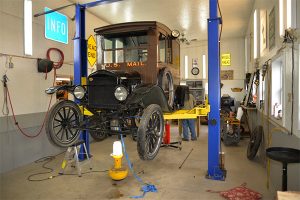 The truck also has a Ruckstell rear end added on May 3, 2017…! What would Fred have to say about this? A page was found in Fred’s papers where it appears in 1922, his annual wage was $1950.
The truck also has a Ruckstell rear end added on May 3, 2017…! What would Fred have to say about this? A page was found in Fred’s papers where it appears in 1922, his annual wage was $1950.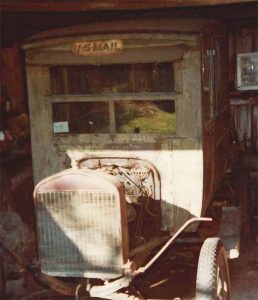 Today the Mail Truck is owned by our VAE Chairman, Dan Noyes, Fred’s great-great grandson. Dan’s dad, Bob gave the truck to him a number of years ago after having the engine rebuilt and restoring the rest of the truck. The 5th generation, if you are counting, would be Dan’s son Ian Noyes.
Today the Mail Truck is owned by our VAE Chairman, Dan Noyes, Fred’s great-great grandson. Dan’s dad, Bob gave the truck to him a number of years ago after having the engine rebuilt and restoring the rest of the truck. The 5th generation, if you are counting, would be Dan’s son Ian Noyes.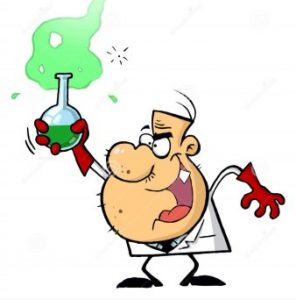 Group III synthetics are oils based upon hydrocracked crude oil. They have many qualities of “true” synthetic oils, but they are not manufactured or “synthesized” in a lab. They are refined from crude oil.
Group III synthetics are oils based upon hydrocracked crude oil. They have many qualities of “true” synthetic oils, but they are not manufactured or “synthesized” in a lab. They are refined from crude oil.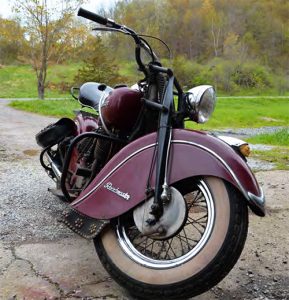
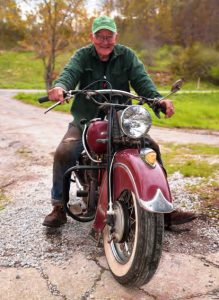

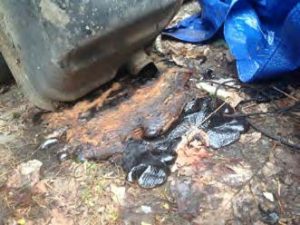 Absent any questions this month, I will share something interesting with you. Recently I drained and removed the gas tank on the Datsun 240Z project. This car was parked in 1982. I removed the drain plug, but no gas came out. I poked at the hole with a screwdriver, and felt a thick tar like substance. I poked through it and very dark, varnished gas began to dribble out.
Absent any questions this month, I will share something interesting with you. Recently I drained and removed the gas tank on the Datsun 240Z project. This car was parked in 1982. I removed the drain plug, but no gas came out. I poked at the hole with a screwdriver, and felt a thick tar like substance. I poked through it and very dark, varnished gas began to dribble out. By the time this goes to print, Mother’s Day will have passed and Memorial Day and Father’s Day will be on the horizon. Let me say, before I really get going, that I probably have written about the subject before and hopefully you are a bit like me and can’t remember and to those who can, just use it as a reminder, if you remember and have followed my past suggestions, a giant kudos to you!
By the time this goes to print, Mother’s Day will have passed and Memorial Day and Father’s Day will be on the horizon. Let me say, before I really get going, that I probably have written about the subject before and hopefully you are a bit like me and can’t remember and to those who can, just use it as a reminder, if you remember and have followed my past suggestions, a giant kudos to you! I have wondered for years why we make such a big deal about what I consider very important certain subjects one day a year. Take Mother’s Day, which has just passed, many people took some time and took Mom out to eat, gave her candy, flowers, jewelry, cards and I’m sure the list would include a huge assortment of things, some of which would have been more appreciated on – well, let’s say a Wednesday. Those things are vacuums, brooms, new dust cloths, ice scraper or maybe a gift certificate to the car wash. Nothing says I love and appreciate you like a gift certificate to the local car wash! Don’t get me wrong, remember I am writing from my prospective and I realize there are women out there that tools would be at the top of their list, I’m just not one of them. Another thing about these days, like Mother’s Day, that I think of is why are those mothers running around and waiting on me. It does create some guilt in me, even though I have worked in a profession which required working on holidays and I certainly didn’t want any (well I won’t say any) one to feel guilty, I was away from my family and hopefully helping them out.
I have wondered for years why we make such a big deal about what I consider very important certain subjects one day a year. Take Mother’s Day, which has just passed, many people took some time and took Mom out to eat, gave her candy, flowers, jewelry, cards and I’m sure the list would include a huge assortment of things, some of which would have been more appreciated on – well, let’s say a Wednesday. Those things are vacuums, brooms, new dust cloths, ice scraper or maybe a gift certificate to the car wash. Nothing says I love and appreciate you like a gift certificate to the local car wash! Don’t get me wrong, remember I am writing from my prospective and I realize there are women out there that tools would be at the top of their list, I’m just not one of them. Another thing about these days, like Mother’s Day, that I think of is why are those mothers running around and waiting on me. It does create some guilt in me, even though I have worked in a profession which required working on holidays and I certainly didn’t want any (well I won’t say any) one to feel guilty, I was away from my family and hopefully helping them out. This can apply to all our “special days” such as Father’s Day, Memorial Day, July 4th, Veterans Day, Easter, Christmas, Labor Day, and President’s Day (combo of Washington and Lincoln’s birthdays, for those of you who didn’t know or have forgotten). Some of these days have become just another day off from work with no mail and no banking and no thought to why it is a special day. And of course, some always fall on a Sunday. When I was in grade school (yes, many moons ago) onMemorial Day we marched to the cemetery, sang songs like America, Battle Hyman of the Republic and read a list of veteran’s names ending in a 6th grader (who had been chosen with great honor) to recite the Gettysburg Address. Yes, I said recited from memory. There wasn’t a child in that school that didn’t want that privilege and honor. I am not saying not to have any of these ‘special days’ but I bet mothers, fathers, veterans, workers would really appreciate a little more recognition, hand shake or a smile and a kind word all throughout the year and not just on ‘their day’. And let’s not forget those who don’t get a day, kind and helpful neighbors, door openers, people who let you go first, those who are there if you fall, those who give when something bad or sad happens to you, those who give you a hug when it is most needed, people who push your car when it is stuck or stops running and I remember once trying to fit a dresser into a way too small car (at the entrance of University Mall) where there was an abundance of onlookers) the Salvation Army bell ringer stashed her buck-et in the front seat and spent time and a lot of muscle trying to thread this needle – to no avail, then, a woman from a Fence Company in Orleans, ran back to her truck and produced enough rope to tie the dresser to the trunk, success – looks great in my house!
This can apply to all our “special days” such as Father’s Day, Memorial Day, July 4th, Veterans Day, Easter, Christmas, Labor Day, and President’s Day (combo of Washington and Lincoln’s birthdays, for those of you who didn’t know or have forgotten). Some of these days have become just another day off from work with no mail and no banking and no thought to why it is a special day. And of course, some always fall on a Sunday. When I was in grade school (yes, many moons ago) onMemorial Day we marched to the cemetery, sang songs like America, Battle Hyman of the Republic and read a list of veteran’s names ending in a 6th grader (who had been chosen with great honor) to recite the Gettysburg Address. Yes, I said recited from memory. There wasn’t a child in that school that didn’t want that privilege and honor. I am not saying not to have any of these ‘special days’ but I bet mothers, fathers, veterans, workers would really appreciate a little more recognition, hand shake or a smile and a kind word all throughout the year and not just on ‘their day’. And let’s not forget those who don’t get a day, kind and helpful neighbors, door openers, people who let you go first, those who are there if you fall, those who give when something bad or sad happens to you, those who give you a hug when it is most needed, people who push your car when it is stuck or stops running and I remember once trying to fit a dresser into a way too small car (at the entrance of University Mall) where there was an abundance of onlookers) the Salvation Army bell ringer stashed her buck-et in the front seat and spent time and a lot of muscle trying to thread this needle – to no avail, then, a woman from a Fence Company in Orleans, ran back to her truck and produced enough rope to tie the dresser to the trunk, success – looks great in my house! I guess what I am saying that once a year isn’t enough. Make a pledge to try and do something no matter how small each day. A kind word goes a long way and I bet if you get in the habit of doing this that if by chance a special day gets here and gone without you – you will be forgiven!
I guess what I am saying that once a year isn’t enough. Make a pledge to try and do something no matter how small each day. A kind word goes a long way and I bet if you get in the habit of doing this that if by chance a special day gets here and gone without you – you will be forgiven!